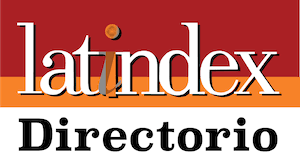Submissions
Author Guidelines
Authors are invited to make a submission to this journal. All submissions will be assessed by an editor to determine whether they meet the aims and scope of this journal. Those considered to be a good fit will be sent for peer review before determining whether they will be accepted or rejected.
Before making a submission, authors are responsible for obtaining permission to publish any material included with the submission, such as photos, documents and datasets. All authors identified on the submission must consent to be identified as an author. Where appropriate, research should be approved by an appropriate ethics committee in accordance with the legal requirements of the study's country.
An editor may desk reject a submission if it does not meet minimum standards of quality. Before submitting, please ensure that the study design and research argument are structured and articulated properly. The title should be concise and the abstract should be able to stand on its own. This will increase the likelihood of reviewers agreeing to review the paper. When you're satisfied that your submission meets this standard, please follow the checklist below to prepare your submission.
The articles to be presented must be original and unpublished with a % similarity of no more than 15%, meeting the following characteristics:
a) Research articles: present the partial or final results of research work related to the areas of management, administration, health, education, environment, tourism, among others. They must be supported theoretically and methodologically, in addition to constituting a scientific contribution to the area of study.
Regarding its writing and presentation, the research article must obey the format established by the Manual of Style: Publication Manual of the American Psychological Association (APA), 7th ed. The length will be between (15) and twenty (20) pages, according to the following structure:
Article identification: Title of the article in Spanish and English (Between 15 and 17 words).
Identification of the authors: it is made up of the surnames and first names, institutional dependency, email, Orcid code and brief resume of a maximum of 3 lines of the author(s).
Abstract: presentation of the core elements of the research in 250 words. This component of the article must contemplate: General objective or purpose, theoretical and methodological references of the study, results and most relevant conclusion. It should be written in a single paragraph, without indentation on the first line, and with single spacing; must be translated into English.
Keywords: they are descriptors that allow the research to be located in the various search sources and scientific databases. A maximum of 10 keywords must be specified, ensuring that they are located in the title of the article, which must also be presented in English.
Introduction: presents the induction to the problem or phenomenon that the article addresses, referring to its manifestation and/or behavior in the context where the research was developed. Additionally, the question or question that guided the study, the objectives pursued, the reasons that argue for its relevance and importance, and previous studies that account for the state of the art of the research carried out, must be included.
Literature review: contemplates the approach to the theoretical positions and reflections that emerge from the researcher's interpretive work, which allows the substantiation of the research problem or phenomenon. It should be a space for theoretical construction related to the events discussed in the article. Tables, graphs, among other organizers of ideas that allow their understanding must be incorporated. The citation of a minimum of 10 authors must be estimated, without incurring self-citation on more than two (2) occasions. Regarding the validity period of the sources, they must be a maximum of 5 years old, however, it is not decisive when considering classical sources, as long as their volume is proportional to the total number of sources consulted.
Methodology: presents the research approach and/or method used in the study. In addition to this, reference must be made to the type and design of the research, units of analysis (population, sampling and sample), data collection techniques and instruments, followed by their validity and reliability, and finally, the data analysis techniques. The intention of the methodological section is to demonstrate the operational route used to achieve the stipulated objectives.
Results: contemplates the presentation, analysis and discussion of the research results, based on their contrast with the theoretical foundations used in the study. It is the component from which the analysis of the data collected in the operational phase of the research is approached, that is, through the application of data collection instruments. The researcher must use tables, tables and/or graphs that contribute to the understanding of said findings.
Conclusions: they refer to the arguments that demonstrate the achievement of the objectives, and the answer to the research question formulated. In that sense, this space becomes the closing of the article from a critical and reflective framework based on the results obtained.
Bibliographic references: presented alphabetically and in accordance with the style of the APA 7th manual.
b) Theoretical review articles: comprise the study or analysis based on theoretical reflection, corresponding to the exercise of original and personal interpretation of the author(s) on topics related to the discipline in which their academic experience is developed. It must be between twelve (15) and fifteen (25) pages in length, following the following structure:
In general terms, it has the introductory elements raised in the previous point: title, authors, summary and keywords.
Introduction: presents the approach to the phenomenon that the article deals with, referring to its manifestation and/or state of the art based on the sources consulted. Additionally, the question or premise that guided the theoretical review, the objectives or purposes outlined and the reasons that argue the relevance of the theoretical review carried out must be presented.
Literature review: development, contrast and interpretation of the theoretical positions and reflections that underpin the topic discussed in the article. It should be a space for construction and theoretical contribution related to the events discussed. At least 25 theoretical sources must be considered for the development of the hermeneutical-interpretive exercise.
Final reflections: they refer to the arguments that, from the perspective of the authors' reflective critical thinking, seek to elucidate the phenomenon or phenomenon of theoretical review, starting from the exercise of analysis and interpretation carried out based on the sources consulted. In that sense, the final reflections provide a unique position of the authors, based on originality and theoretical contribution to the disciplinary field to which the publication is due.
Bibliographic references: presented alphabetically and in accordance with the style of the APA 7th manual.
c) Product descriptions, interviews and reviews: for the presentation of descriptions, interviews and reviews, they must not exceed five (5) pages based on the following criteria:
- Descriptions: contains the presentation and/or analysis resulting from an experience based on the case study. Documents the most relevant facts and characteristics of an educational, artistic or design work of a historical or current nature. It is reflective in nature and systematization of experiences.
- Interviews: collects the opinions issued by a national or international expert on a specific topic or what is done in the academy or profession, which contributes to the development of research on the area of knowledge discussed.
- Reviews: includes descriptive and/or analytical comments on relevant publications that update the theoretical debate of research in the field of management, administration, health, environment, tourism, education, among others; It also includes reference to the organization and/or participation in events that demonstrate the impact of research in the area and degree projects that have been the subject of a special distinction.
Submission Preparation Checklist
All submissions must meet the following requirements.
- This submission meets the requirements outlined in the Author Guidelines.
- This submission is original and has not been previously published, nor is it before another journal for consideration.
- All references have been checked for accuracy and completeness.
- All tables and figures have been numbered and labeled.
- Permission has been obtained to publish all photos, datasets and other material provided with this submission.
Copyright Notice
The content of the publications is the responsibility of the authors. The journal allows authors to maintain copyright on published articles and documents. The license used is Commons Attribution-NonCommercial International License. CC BY NC
Privacy Statement
The names and email addresses entered in this journal site will be used exclusively for the stated purposes of this journal and will not be made available for any other purpose or to any other party.









